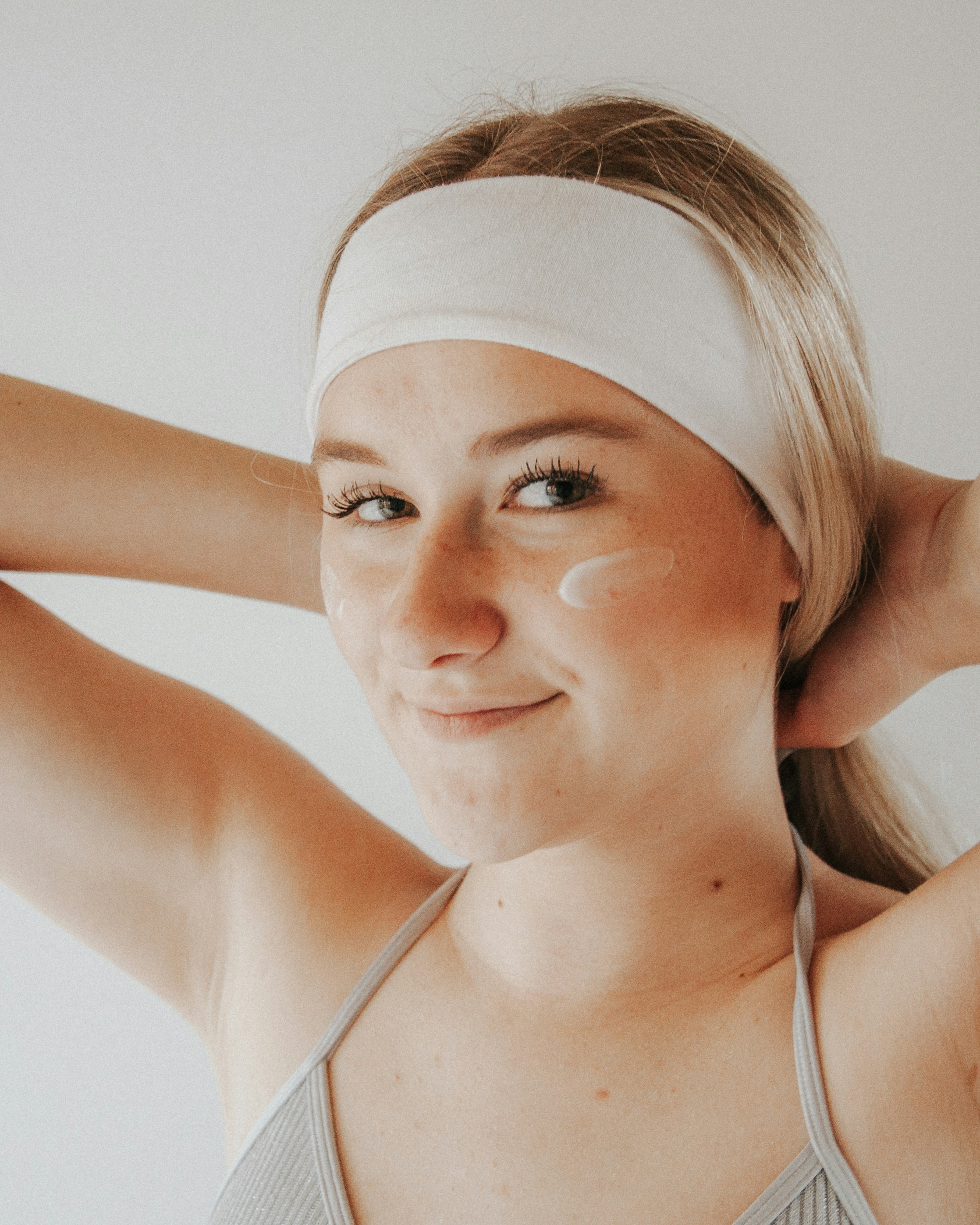Microneedling, a revolutionary skin rejuvenation technique, tailors to many skin types by promoting collagen production and enhancing the overall complexion.
Known for its versatility, it brings hope to those battling acne scars, age spots, and even deep-set wrinkles without resorting to invasive surgery.
There’s much to uncover for individuals curious about how this minimally invasive procedure adapts to specific skin concerns—from sensitive to oily and everything in between.
In this article, we unravel the mysteries of microneedling for various skin types, offering insights and strategies for personalized skincare solutions.
Keep reading to discover how to fine-tune this process for your unique skin needs and achieve glowing results.
Key Takeaways
- Microneedling Boosts Collagen and Elastin Production, Enhancing Skin Texture and Firmness
- Tailored Treatments for Specific Skin Types Minimize Discomfort and Maximize Benefits
- Proper Aftercare, Including Gentle Moisturizing and Sun Protection, Is Crucial for Optimal Healing
- Follow-up sessions Help Maintain the Improvements in Skin Health and Appearance
- Communication and Realistic Expectations Are Key for Patient Satisfaction With Microneedling Results
Understanding Microneedling and Its Benefits

Microneedling, often celebrated as collagen induction therapy, is a minimally invasive procedure promising revival for various skin types.
It creates tiny punctures in the top layer of the skin with fine needles, igniting the body’s natural wound-healing processes.
This action boosts collagen and elastin production, producing rejuvenated, firmer, smoother skin.
Key benefits include improved texture and tone, diminished scars and hyperpigmentation, and enhanced absorption of skincare products.
This guide dives into how microneedling serves different skin issues, offering personalized solutions for everyone.
What Is Microneedling?
Microneedling, a term often synonymous with collagen induction therapy, involves tiny needles creating minor skin wounds. This procedure triggers the body’s healing response, stimulating collagen and elastin production. It’s a popular choice for people looking to address issues like fine lines, wrinkles, scars, and overall skin texture without resorting to more invasive methods.
How Does Microneedling Work?
Microneedling involves a device outfitted with fine needles to create controlled micro-injuries on the skin surface. These superficial punctures are enough to trigger the skin’s healing response. The process stimulates the production of collagen and elastin, essential proteins for maintaining the skin’s structure and elasticity. Consequently, this leads to a smoother, more youthful skin appearance, often making microneedling a sought-after treatment for those aiming to diminish fine lines and scars and improve overall skin texture.
| Step | Action | Outcome |
|---|---|---|
| 1 | Creating Micro-Injuries | Stimulation of Skin’s Healing Response |
| 2 | Healing Response Activated | Increased Collagen and Elastin Production |
| 3 | Collagen and Elastin Enrichment | Improved Skin Texture and Firmness |
Key Benefits of Microneedling for the Skin
Microneedling shines as a beacon of hope for those aiming to revitalize their skin, offering noticeable advancements in skin health. This technique elevates the skin’s appearance by minimizing the visibility of scars, reducing signs of aging like wrinkles and fine lines, and battling uneven skin tone. It also significantly enhances the skin’s ability to soak up the benefits of other skincare products, ensuring that every cream or serum applied post-treatment works more effectively.
Microneedling for Sensitive Skin: What You Need to Know

Sensitive skin types present a unique challenge in microneedling, requiring a tailored approach to harness the procedure’s benefits while minimizing potential discomfort and irritation.
Adjusting the technique specifically for sensitive skin involves meticulous pre-treatment care, aiming to prepare the skin to reduce sensitivity and increase tolerance to the procedure.
Similarly, post-treatment care is critical, focusing on soothing and protecting the skin to facilitate a smooth healing process and prevent adverse reactions.
This section illuminates the nuances of microneedling for those with sensitive skin, emphasizing the importance of customized care before and after the treatment to ensure a positive, irritation-free experience.
Adjusting the Technique for Sensitive Skin
For those with sensitive skin, adjusting the microneedling technique starts with using shorter needles to minimize discomfort and reduce the risk of irritation. Special care is also given to the speed and pressure applied during the procedure to ensure the skin’s resilience is not overwhelmed, fostering a gentler but effective treatment pathway to boost skin health without undue stress on sensitive complexions.
Pre-Treatment Care for Sensitive Skin Types
Embarking on microneedling with sensitive skin requires a particular focus on pre-treatment care to protect the delicate balance of the skin’s protective barrier. Key strategies include thorough hydration, gentle, non-irritating cleansers, and applying products rich in hyaluronic acid to bolster moisture levels. This preparatory stage aims to fortify the skin, ensuring it’s resilient and primed for the microneedling procedure:
| Pre-Treatment Step | Recommended Action | Benefit |
|---|---|---|
| 1 | Hydration | Enhances skin’s moisture barrier |
| 2 | Use of gentle cleansers | Prevents irritation and maintains skin balance |
| 3 | Applying hyaluronic acid | Boosts skin’s hydration and readiness |
Post-Treatment Care to Minimize Irritation
After microneedling, sensitive skin demands a gentle touch to keep discomfort and potential irritation at bay. Cooling, soothing products that don’t contain harsh chemicals or fragrances can help calm the skin swiftly. Also, avoiding direct sunlight and applying broad-spectrum sunscreen daily aids in protecting the treated areas from aggravating environmental factors, ensuring a smoother healing journey.
Optimal Microneedling Practices for Oily and Acne-Prone Skin

Oily and acne-prone skin types present unique challenges in microneedling, necessitating a careful selection of needle lengths, serums, and aftercare routines to maximize benefits while mitigating any risk of aggravating the skin.
Choosing the right needle length is crucial for addressing the specific concerns of these skin types without exacerbating existing conditions.
Further enhancing the treatment’s results involves using serums compatible with oily skin to reduce oil production and prevent clogged pores.
Lastly, a focus on preventing breakouts post-treatment is essential, as proper aftercare can significantly reduce the chances of triggering new acne flare-ups, ensuring a smoother, clearer complexion after the healing process is complete.
Choosing the Right Needle Length
For oily and acne-prone skin, choosing a needle length short enough to avoid aggravating active acne yet long enough to stimulate collagen production effectively is critical. A precise balance is necessary to ensure the treatment targets concerns like oiliness and the potential for clogged pores without increasing the risk of irritation or breakouts. Specialists often opt for shorter, finer needles to navigate these challenges, offering a safer, more effective path to improving skin texture and health.
Enhancing Results With Appropriate Serums
Enhancing microneedling outcomes for those with oily and acne-prone skin demands the strategic use of serums tailored to their needs. Applying serums rich in vitamin C and hyaluronic acid post-procedure can significantly diminish oil production and soothe inflammation, leading to a visibly more transparent and more balanced complexion. These carefully chosen serums amplify the benefits of microneedling and ensure the skin remains hydrated without feeling overwhelmed by excess oil.
Preventing Breakouts Post-Treatment
After a microneedling session, keeping acne at bay involves a careful approach to skin care. Gently cleansing the skin to remove dirt without stripping natural oils and using non-comedogenic moisturizers helps maintain a healthy balance. This strategy, coupled with avoiding makeup for at least 24 hours, supports clear pores and prevents the outbreak of new acne.
Microneedling for Dry and Mature Skin: A Strategic Approach

Turning attention to individuals with dry and mature skin, microneedling emerges as a rejuvenating ally, capable of enhancing hydration and erasing the marks of time.
Recognizing the unique needs of this skin type, a strategic approach focuses on amplifying moisture both before and after treatment, using microneedling as a lever to combat the visible signs of aging.
Moreover, customizing the frequency of treatments becomes imperative to ensure that each session contributes positively to the skin’s texture and overall wellness, allowing for a graceful aging process.
Hydration Is Key: Pre and Post-Care
Maintaining hydration is crucial for individuals with dry and mature skin before and after microneedling treatments. This ensures the skin receives the full benefits of the procedure, enhancing its ability to regenerate and maintain moisture. By focusing on hydration, patients can see improved results in skin texture and a reduction in the appearance of fine lines.
- Pre-care involves using rich moisturizers and hydrating serums to prepare the skin, making it more receptive to the treatment.
- Post-care includes continuing with a hydration-focused regimen, incorporating products like hyaluronic acid to support the skin’s recovery and enhance the effects of microneedling.
Combating Signs of Aging With Microneedling
Microneedling is a formidable fighter against aging, employing fine needles to puncture the skin gently and spark the natural rejuvenation process. This promotes a youthful appearance by reducing wrinkles and boosting elasticity.
- Initiates the body’s collagen production to refine texture and diminish wrinkles.
- Increases skin’s elasticity, making it look and feel more supple.
- Encourages a healthier complexion by targeting signs of age.
Tailoring the Treatment Frequency
Finding the right frequency for microneedling treatments is critical for those with dry and mature skin: It’s about balance. Too frequent sessions might overwhelm the skin, while infrequent treatments may not sustain the gains in hydration and elasticity achieved. Specialists recommend starting with treatments about 4-6 weeks apart, adjusting based on the skin’s response and recovery speed.
- Begin with treatments every 4-6 weeks to gauge skin’s reaction.
- Adjust frequency to align with skin’s recovery and goals.
- Monitor skin’s hydration and elasticity as indicators of optimal scheduling.
Addressing Hyperpigmentation With Microneedling

Hyperpigmentation, a common skin concern, can manifest as dark spots, age spots, or uneven skin tone. It often leads many to seek microneedling for its potential to lighten and even out complexion.
The process depends heavily on selecting the appropriate needle depths to effectively target pigmentation without causing harm to the surrounding tissue.
In addition, combining microneedling with specific topical treatments can enhance the lightening effects while accelerating the skin’s recovery.
Understanding what results to expect and how often treatments should be scheduled is crucial for patients aiming to tackle hyperpigmentation effectively and sustain the benefits over time.
Effective Needle Depths for Pigmentation Issues
Choosing the correct needle depth is crucial when using microneedling to target hyperpigmentation, as it allows for precise treatment of dark spots without risking damage to the skin’s deeper layers. Specialists usually select needle lengths that penetrate just enough to stimulate melanin dispersion and renewal of the epidermal layer, thereby reducing the appearance of hyperpigmentation effectively.
Combining Microneedling With Topical Treatments
Combining microneedling with topical treatments can significantly enhance the fight against hyperpigmentation. By applying products like vitamin C serum or hydroquinone immediately after microneedling, the active ingredients are better absorbed by the skin, speeding up the lightening of dark spots and promoting an even tone. This synergistic approach allows for a more targeted and effective treatment of pigmentation issues.
Expected Results and Treatment Intervals
Patients targeting hyperpigmentation with microneedling often see noticeable improvements after several sessions, with a gradual lightening of dark areas and a more even skin tone emerging over time. Setting realistic expectations, the total effect typically unfolds throughout treatments, usually spaced four to six weeks apart, allowing the skin adequate time to heal and regenerate between sessions.
Microneedling for Combination Skin: Balancing the Approach

Combination skin, with its unique mix of oily and dry areas, presents a distinct challenge for microneedling treatments.
Striking the right balance requires a nuanced approach, starting with identifying specific areas needing attention.
Whether oil control in the T-zone or hydration for dry patches, tailoring a treatment plan that addresses these varied concerns is crucial.
Alongside managing patient expectations and guiding them through a tailored aftercare routine, it ensures the skin benefits fully from the procedure while maintaining its health and resilience.
Identifying Target Areas for Treatment
For someone with combination skin, pinpointing which parts of the face need more hydration or oil control forms the foundation of effective microneedling. To customize the treatment, the specialist assesses the skin, identifying oily zones, typically the forehead and nose, and drier areas, like the cheeks. This tailoring ensures that each part of the face receives the care it needs, helping to achieve balanced and improved skin health.
Customizing Treatment Plans for Varied Concerns
Customizing treatment plans for combination skin means addressing dry and oily areas with precision. The approach involves selecting serums and needle depths that cater to the distinct needs of different facial zones: oily regions may benefit from lighter, water-based products to avoid clogging pores, while drier areas might need denser, moisturizing treatments to enhance hydration. This method ensures that every part of the skin receives what it needs for balanced health and appearance.
| Zones | Treatment Focus | Products to Use |
|---|---|---|
| Oily Areas (T-zone) | Oil Control | Light, water-based serums |
| Dry Patches (Cheeks) | Hydration Boost | Dense, moisturizing creams |
Managing Expectations and Aftercare
Effective communication about what can be realistically achieved through microneedling is pivotal for patients with combination skin: setting clear expectations helps them visualize the journey towards healthier skin. Aftercare is critical, focusing on a routine that maintains the skin’s balance, reduces potential irritation, and supports the healing process through gentle cleansing, targeted moisturization, and diligent sun protection.
| Step | Focus | Recommended Aftercare |
|---|---|---|
| 1 | Expectation Setting | Clear communication about treatment outcomes |
| 2 | Maintaining Skin Balance | Gentle cleansing, targeted moisturizing |
| 3 | Supporting Healing | Sun protection, avoiding harsh products |
Maximizing Results: Post-Microneedling Care Tips for All Skin Types

After experiencing the transformative effects of microneedling, proper aftercare becomes crucial to maximize healing and results, irrespective of skin type.
This section delves into the pivotal steps for post-treatment care, highlighting the essential products and practices that aid recovery.
Understanding the signs of proper healing and knowing when to consult a professional are vital components of adequate care.
Additionally, strategizing the timing of follow-up sessions is instrumental in maintaining the rejuvenating gains and achieving long-term skin health benefits.
The following insights will help patients confidently navigate the post-treatment period, ensuring optimal outcomes from their microneedling journey.
Essential Aftercare Products and Practices
After microneedling, choosing the correct aftercare products is vital to soothing and restoring the skin. A gentle, fragrance-free moisturizer helps keep the treated area hydrated, while a broad-spectrum sunscreen protects from UV damage during the sensitive healing phase. Patients should opt for products designed for post-procedure care to ensure they are gentle enough not to irritate the rejuvenated skin.
Signs of Proper Healing and When to Seek Help
Proper healing after microneedling often presents as uniform redness and minimal swelling that diminishes within a few days, signaling the skin’s natural recovery process is on track. If a patient notices excessive redness, prolonged swelling, signs of infection such as pus, or experiences severe pain beyond the initial 48 hours, it’s crucial to consult their skincare professional. These symptoms could indicate the need for medical attention to prevent complications and ensure the skin heals optimally.
Scheduling Follow-Up Sessions for Long-Term Benefits
For those seeking to maintain the rejuvenation benefits provided by microneedling, arranging periodic follow-up sessions is vital. These sessions help in preserving the skin’s improved texture and elasticity. Based on the individual’s skin response and goals, the specialist might suggest a schedule that ensures the skin continues receiving the necessary stimulation to produce collagen, keeping the complexion vibrant and youthful.
Conclusion
Microneedling, a powerful collagen induction therapy, offers a diversified approach to skin rejuvenation for various skin types, including sensitive, oily, acne-prone, dry, mature, and combination.
This minimally invasive procedure stimulates the body’s natural healing response, enhancing collagen and elastin production by creating controlled micro-injuries on the skin.
This leads to improved skin texture, reduced scars, and diminished signs of aging.
Customizing the technique and aftercare according to skin type is crucial, with specific practices like adjusting needle lengths and selecting appropriate serums and moisturizers to address individual concerns.
Proper pre-treatment preparation and post-treatment care are essential to maximize the benefits and ensure a smooth healing process.
For those targeting hyperpigmentation or tackling the challenges of combination skin, a tailored approach balances treatment intensity and product choice to achieve optimal outcomes.
To maintain long-term benefits, scheduling periodic follow-up sessions is recommended, ensuring sustained skin health and rejuvenation.
Microneedling, therefore, stands as a versatile and practical option for enhancing skin appearance, provided it is tailored to meet the unique needs of each skin type.



